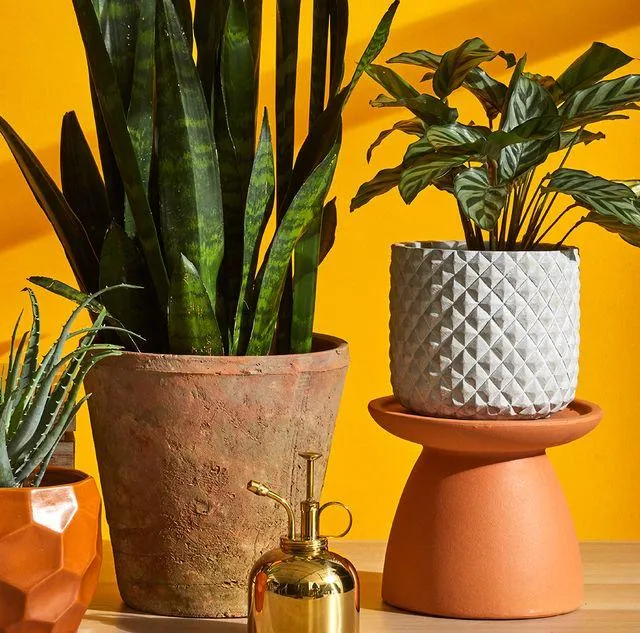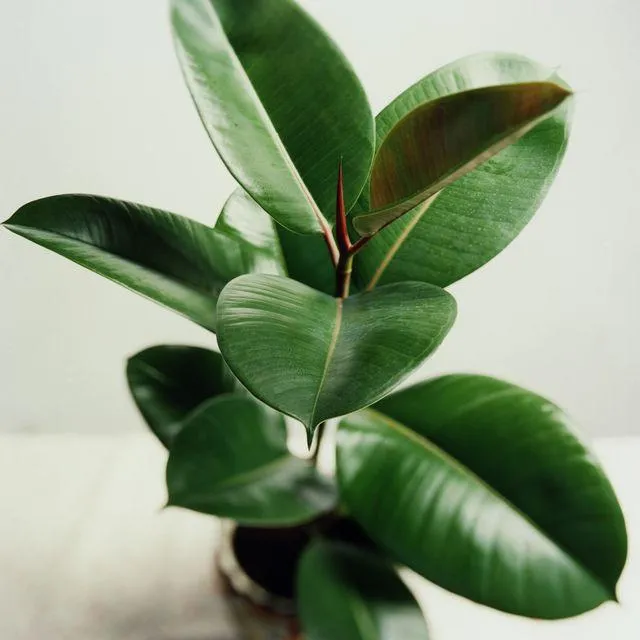Everything You Need to Know About indoor Trees for Your Home
If you’re searching for “indoor trees for home” then you’ve probably been contemplating bringing the beauty of nature indoors. In this article, I’ll cover all the basics of keeping indoor trees along with tips from my own experience to help you choose the perfect tree for your space.
Why Keep Indoor Trees?
There are many benefits to having live indoor trees:
- They add visual interest and a sense of greenery to brighten up a room.
- Many indoor trees help purify the air by absorbing toxins like formaldehyde and releasing oxygen.
- Houseplants have been shown to reduce stress and boost mood.
- Small trees in pots can act as room dividers or accent pieces in a decor.
Basically, trees are a simple way to bring the calming, life-giving elements of nature indoors. They not only beautify your home but may also have positive effects on your physical and mental well-being.
Choosing the Right Species
When starting your indoor tree collection, consider types that thrive in low-light conditions found inside homes. Here are some top choices:
- Spider plant: Virtually impossible to kill, this cascading plant thrives on neglect. Great for bathrooms and offices.
- Palm: Varieties like parlor palm and bamboo palm offer an tropical vibe. Provide humidity and avoid direct sun.
- Pothos: A vining plant that grows well trailing up walls or poles. Extremely hardy and removes toxins from the air.
- Peace lily: Beautiful white blooms and large, glossy leaves. Lets you know when it needs water with drooping foliage.
I’d put peace lilies and pothos at the top of the list for easy-care indoor trees perfect for any home. Test different varieties to see what suits your space.
Plant Care Tips
Once you’ve selected your indoor trees, keeping them happy and healthy takes some basic TLC:
- Water when the top inch of soil is dry. Overwatering causes more houseplant deaths than under-watering.
- Fertilize monthly in spring and summer with a diluted, all-purpose houseplant food.
- Provide adequate, indirect sunlight. Rotate plants for even exposure.
- Repot annually or when roots crowd the container for optimal growth.
- Control pests like spider mites or aphids with neem oil or insecticidal soap as needed.
The key is finding a watering routine that works for your home and lifestyle. From my experience, it’s better to water thoroughly less often than sprinkle daily.

Tips for Problem Spots
Certain areas of the home pose more challenges for trees. Here are some tricks I’ve learned:
For bathrooms: Choose super low-maintenance trees like pothos or spider plant. Run a humidifier to mimic their native environment.
For kitchens: Go for tolerant plants and rotate to avoid scalding from steam. Place trees farther from heat/moisture sources.
For North-facing windows: Opt for light-loving trees and supplement weak indoor light with grow lights or lamp tables.
With these adjustments, you can have indoor trees thriving even in less-than-ideal spots. Test different tactics until you find what works.
Setting Up the Perfect Home for Your Tree
To get the most out of your indoor trees, provide the TLC they deserve with these tips:
- Choose a container one to two inches larger than the root ball for growth.
- Use a well-draining potting mix like peat moss or bark to prevent soggy roots.
- Place trees on trays to catch excess water and prevent brown spots on furniture.
- Display trees together on plant shelves or arrangement areas for a curated look.
- Consider a humidifier to mimic tropical conditions for fussier trees indoors.
With the right setup, your trees will be happy, healthy ambassadors of nature to enjoy for years. Don’t be afraid to experiment to learn what works best!

Common Problems and How to Fix Them
Even with the best of care, issues may arise. Here are some remedies I’ve used in tricky situations:
Yellowing leaves: Overwatering is usually the cause. Improve drainage and reduce water until soil is dry. A few drops of hydrogen peroxide in water may help too.
Leaf drop: Could be from underwatering, temperature shock, or pests. Check moisture levels, move to a more stable spot, and treat pests properly.
Stunted growth: The tree may need a larger pot, fertilizer, or more light. Carefully repossess and provide these needs for a growth spurt.
Brown crunchy tips: Indicates dry air. Use a humidifier, don’t place near vents, and mist leaves regularly. Flush soil and water thoroughly too.
Sometimes trees just get funky for perplexing reasons. Don’t throw them out right away – most issues can be sorted with TLC and experimenting. Have patience!
Ideas for Displaying Your Indoor Trees
Once you’ve got your trees thriving, show them off! Here are some creative ways to incorporate them decoratively:

- Use trailing varieties like pothos or vines as living wall art.
- Display tabletop trees individually or in clustered ceramic pots.
- Hang baskets of foliage plants from ceiling hooks or wall shelves.
- Arrange trees on tiered plant stands in sunlit windows.
- Interplant trees of different textures together for visual interest.
- Train climbing trees up poles or frames for a lush privacy screen.
With some imagination, trees can become focal points that tie a room together both functionally and aesthetically. Don’t be afraid to go wild – your trees will love the attention!
I hope this extensive guide has answered your questions about keeping indoor trees. Please let me know if any other issues come up. Wishing you the best of luck bringing nature indoors!
Factors to Consider When Choosing an Indoor Tree for Your Home
| Tree Type | Size | Light Needs | Watering Needs | Care Level |
|---|---|---|---|---|
| Chinese Evergreen | Small to Medium | Low to Medium Light | Allow Topsoil to Dry Slightly | Low |
| Dwarf Umbrella Tree | Small | Bright Indirect Light | Water Weekly | Low |
| Fiddle Leaf Fig | Medium to Large | Bright Light | Allow Topsoil to Dry Slightly | Moderate |
| ZZ Plant | Small to Medium | Low to Bright Indirect Light | Water When Topsoil is Dry | Low |
| Snake Plant | Small to Large | Low to Bright Indirect Light | Water Every 2-4 Weeks | Very Low |
FAQ
-
How big can indoor trees get?
Indoor trees can grow to be a decent size, but they won’t reach their maximum potential like outside. It depends on the variety, but most indoor trees max out around 6 feet tall. Bigger than that and they may not fit in your home!
-
Do indoor trees need direct sunlight?
For the most part, yes. While some trees can survive in low-light conditions, they will not thrive without adequate sunlight. Aim to put your tree in a spot that gets at least 6 hours of direct sunlight per day. You can also use a grow light as a supplement if sunlight is limited.
-
How often do I need to water an indoor tree?
Watering needs vary depending on the tree type and indoor conditions. As a basis, check the soil every week. If the top inch is dry, it’s time to water. Give the tree a deep drink until the excess runs out the drainage holes. In winter when growth is slower, cut back on water a bit.
-
What types of trees do best indoors?
A few varieties that commonly do well inside are bamboo palm, dracaena, ficus, citrus trees, mango trees, and dwarf banana plants. These tend to be very hardy and tolerate lower light levels. Nevertheless, fast-draining soil is still important no matter what type you choose.
-
How do I keep pests away from an indoor tree?
Regular inspections help catch issues early before they become major infestations. Look closely under leaves for signs of bugs. You can use neem oil or insecticidal soap as natural treatments. Check the soil quality too – soggy roots are inviting to fungus gnats. Make sure your tree is getting enough sun as well, as pests are more likely on stressed plants.

-
What is the best fertilizer for indoor trees?
All-purpose houseplant fertilizer works great for most indoor trees. Dilute it to half or quarter strength and feed monthly during the growing season. Palm and citrus trees in particular need an fertilizer high in potassium and magnesium. Make sure whatever you use is water soluble for proper absorption. Too much fertilizer on the flip side can cause burns, so go light!
-
Can indoor trees increase air quality?
Indeed, indoor trees can kind of help clean the air. According to studies, certain varieties are great at absorbing chemicals like formaldehyde, benzene, and trichloroethylene. Amazingly, a few good-sized plants can remove 90% of toxins from a room’s air. Japanese bamboo palm, lady palm, and rubberg tree are supposedly some of the best. Perhaps our homes will become healthier with a few trees!
